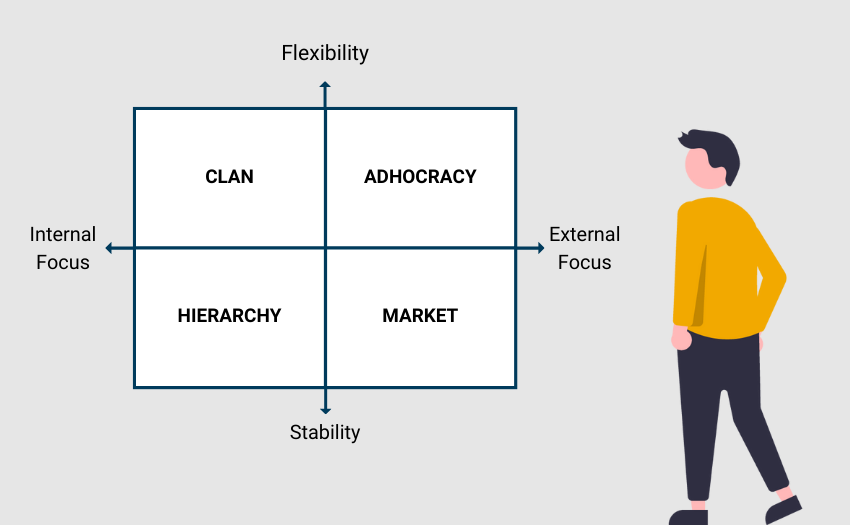The first step in implementing the Competing Values Framework is to develop a deep understanding of the organizational cultures represented in the four quadrants.
Read this article for a detailed description of each culture type and how to design change.
Leaders should include their teams in the discovery process to assess the current dominant culture in the workplace and where improvement is necessary.
It’s essential to encourage a blend of all four quadrants within the team structure that apply to different internal processes for a well-balanced, dynamic culture. For example, a clan-dominant organizational culture can also prioritize the innovation we see in adhocracy culture.
Identify Organizational Goals
In uncovering valuable insights during the cultural assessment, teams can discover aspects of culture, such as weak points to improve upon to move the needle on the y or x-axis of the four quadrants.
With a clear view of cultural priorities, teams can establish roadmaps that align with their targeted values and focus points–edging them closer to overarching goals.
It’s essential to have strategies and initiatives in place to reinforce the desired results. The strategy behind each unique organizational culture should aim to drive performance and success for employees, customers, and stakeholders.
Choose a Leadership Approach
Understanding the dominant culture type within an organization allows for improved leadership and management practices.
The Competing Values Framework helps agile leaders develop management approaches that resonate with an organization’s core values–creating an environment with clear messaging that drives cultural transformation.
Rather than inventing management techniques that may or may not align with fundamental values, leaders know how to nurture their work environment based on the dominant culture.
For instance, pairing employees for mentorship programs for personal development may be a productive strategy for a clan-dominant culture.
The Importance of Cultural Adaptability






